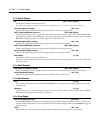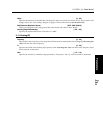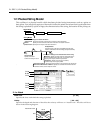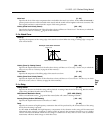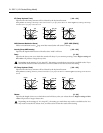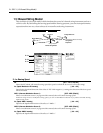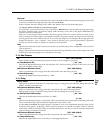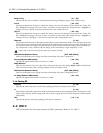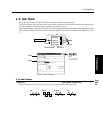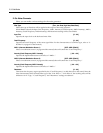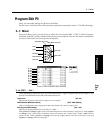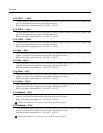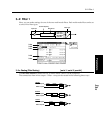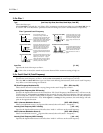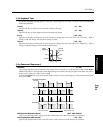
Damp KTr Key [C–1…G9]
Specifies the key above and below which keyboard tracking will begin to apply to the “Damp” effect.
Low Int [–99…+99]
Specifies the depth and direction in which the “Damp” amount will change for notes below the “Damp KTr
Key.” Positive (+) settings will cause “Damp” to increase for notes below the “Damp KTr Key.” Negative (–)
settings will cause “Damp” to decrease for notes below the “Damp KTr Key.”
High Int [–99…+99]
Specifies the depth and direction in which the “Damp” amount will change for notes above the “Damp KTr
Key.” Positive (+) settings will cause “Damp” to increase for notes above the “Damp KTr Key.” Negative (–)
settings will cause “Damping” to decrease for notes above the “Damping KTr Key.”
Dispersion [0…99]
Specifies the inharmonicity of the higher partials relative to the fundamental. With a value of 0, the partials will
be located at integer (whole number)x multiples of the fundamental. As this value is increased, the partials will
move further away from integer multiple locations. In general, thin and flexible strings can be simulated by a
low “Dispersion” value, and thick and stiff strings can be simulated by a high “Dispersion” value.
If this value is raised excessively, the pitch may become unstable.
AMS (Alternate Modulation Source) [OFF…MIDI (CC#83)]
Selects a modulation source (
☞
page 64 of this manual) that will control “Dispersion.”
Intensity (Dispersion AMS Intensity) [–99…+99]
Specifies the depth and direction of the effect of “AMS.”
Bridge Reflection [0…99]
Specifies the amount of the wave that will be reflected at the end of the string. Higher values will make the
notes sound more easily. With a setting of 0 there will be no reflection at all.
AMS (Alternate Modulation Source) [OFF…MIDI (CC#83)]
Selects a modulation source (
☞
page 64 of this manual) that will control “Bridge Reflection.”
Int. (Bridge Reflection AMS Intensity) [–99…+99]
Specifies the depth and direction of the effect of “AMS.”
2–1d: Peaking EQ
Frequency [0…49]
Specifies the center frequency at which the peaking EQ will boost (attenuate) the sound.
Q [0…29]
Specifies the width of the region that will be boosted (attenuated) by the peaking EQ. With a setting of 0, a wide
region will be affected. With a setting of 29, only a narrow region close to the center frequency will be boosted
(attenuated).
Gain [–18…+18]
Specifies the gain by which the peaking EQ will boost or attenuate.
2–2: OSC 2
OSC2 parameters have the same structure as OSC1 parameters. Refer to “2-1: OSC 1.”
2:1 OSC 1 (13: Bowed String Model), 2-2: OSC 2



